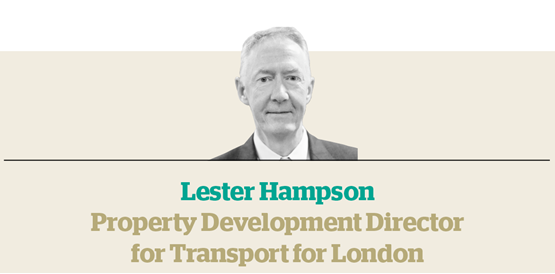
For the past 150 years, our predecessors have played a transformative role in London’s development and growth. At the core of this growth are the 270 London Underground stations connecting communities across the capital. For generations, these stations have remained as constant hubs amid fluctuations in population. Transport for London recognises the vital part stations play in their neighbourhoods.
The population of London is set to rise from 8.6 million today to ten million by 2030. TfL is responding to this significant additional demand being placed on the capital’s transport network by carrying out one of the world’s largest transport investment programmes. Alongside this, we are continually pioneering improvements in safety, customer information and accessibility to improve people’s experience at stations.
Over the next three years, TfL will become the only major European city to operate its transport system without public subsidy while keeping transport affordable for the millions who rely on us every day. So, as well as providing continually improving transport services and a more vital role for stations, TfL must itself become more efficient and independently find ways in which to generate more revenue.
In addition to a full review of our organisation to find more efficient and cost-effective ways of working, we are carrying out a plan to generate £3.4 billion by 2023, through a number of commercial development schemes including property development, advertising and retail opportunities. A key part of this is thinking strategically about how stations can evolve to best serve the ever-changing needs of local communities and customers, providing benefits beyond transport.
Housing is generally recognised as the biggest challenge that London faces. Last year, we announced that we will be developing the first phase of 75 sites over the next ten years. This will involve us developing 10,000 homes on 300 acres in highly desirable locations above, adjacent or very near to stations. Because all of our land is attached to the operational network, delivering any new development is complex and requires time and strong partnerships.
We will be working closely with the Mayor’s Office, the London Assembly, local boroughs, communities and our 13 newly appointed property development partners to deliver a mix of housing that will generate a third of our revenue target and infrastructure improvements, while supporting the Mayor’s long-term strategic target of 50% affordable housing across our sites. This has the potential to yield enormous benefits for London and more than £1.1bn in revenue for reinvestment in improving transport.
The massive volume of footfall at our stations means they are perfectly placed for retailers to provide a wide range of goods and services that customers need. Over time, we expect to see our 1,000 retail units increasingly populated by businesses that have launched on our estate. At Old Street station alone, there have been more than 200 pop-up businesses in the past two years. Beyond this, we are looking at ways to expand our commercial and retail offerings at alternative locations, from railway arches to street vending pitches.
The advertising space across the TfL network makes up 20% of the out-of-home UK advertising market and 40% of the out-of-home London advertising market. With a new advertising model set to launch later this year, we will declutter station environments, providing less but more valuable and targeted advertising. This will enhance the experience of customers and produce greater opportunities for the advertising industry, generating at least £1.2bn for TfL over the next ten years.
The end result is that TfL is carefully considering how best to improve and utilise its assets for the greatest, long-term benefit of London. Over the coming years we will deliver ambitious, long-term changes, providing increasingly accessible, better-connected and modern stations, homes, office, retail and leisure spaces as well as more contemporary, engaging advertising.
The notion that stations are community hubs will come into sharp focus as we expand their role in neighbourhoods, and as income streams to reinvest in transport.











